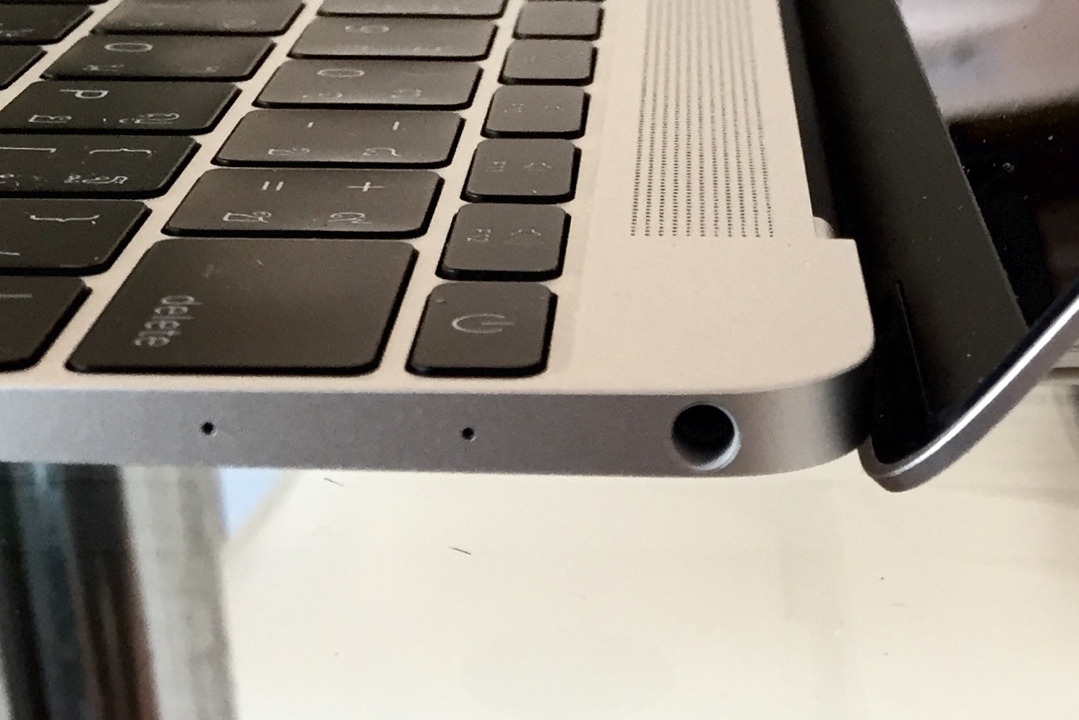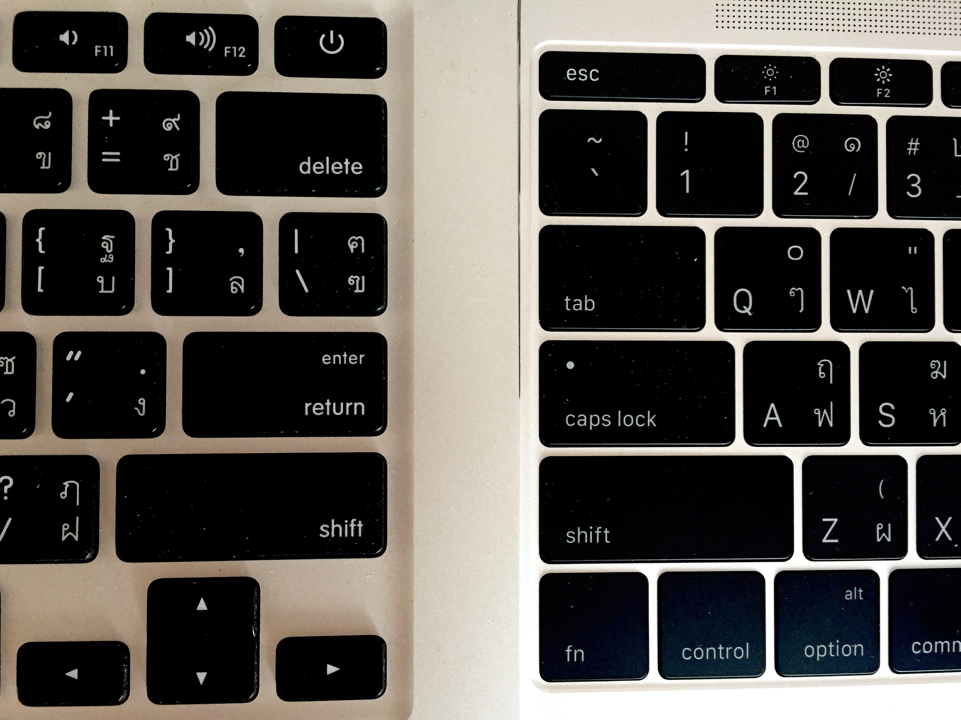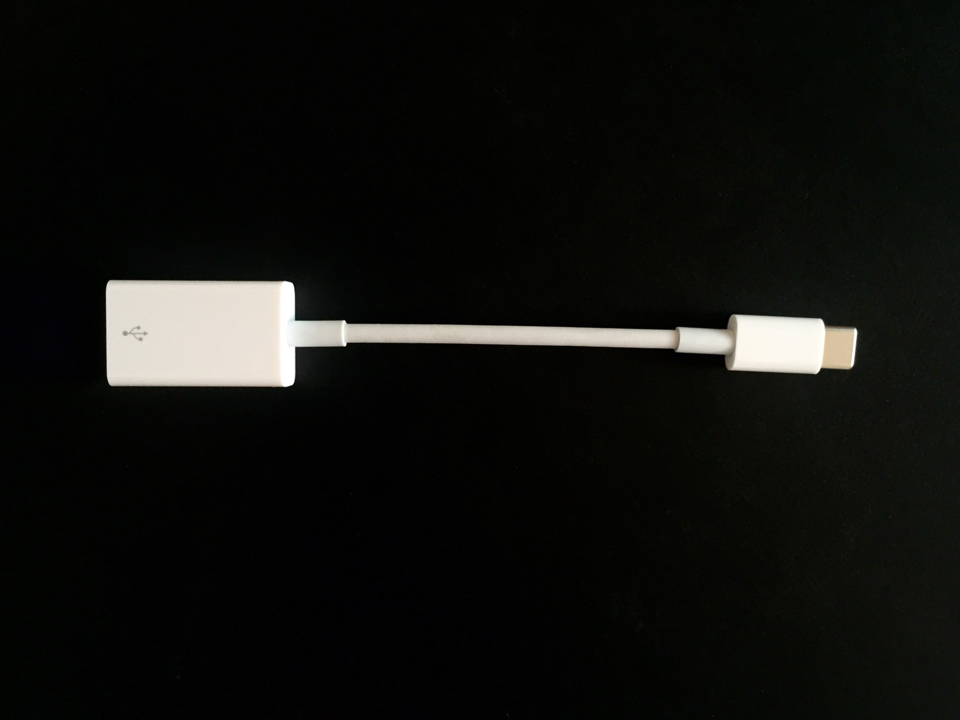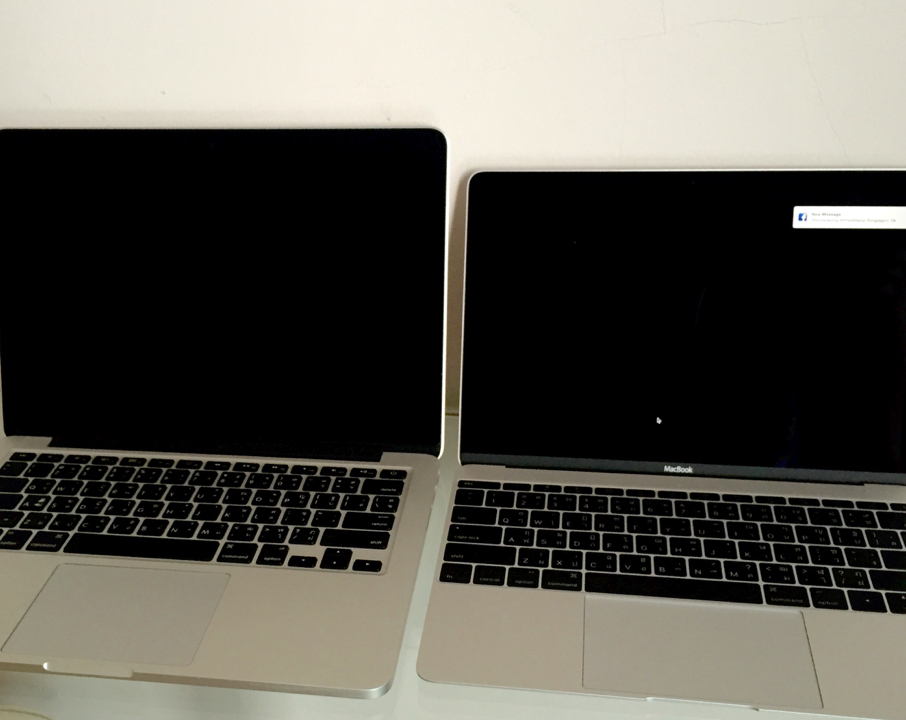|
By Graham K. Rogers

I was in San Francisco for the announcement of the MacBook Air in 2008 and although it was pitched as a second or even third computer for those on the move, it failed to excite me - even after a couple of weeks in my hands - apart from its clean lines and light weight. Apple now has a second lightweight Mac, the MacBook and I was similarly doubtful when I read the specifications. I have been running one for the last couple of days. Would I have one? Absolutely.
I will be saving a lot of the comments for my column in the Bangkok Post - this coming Wednesday and after - but it seems worthwhile putting a couple of points online. I have seen others reverse their original impressions once they had this new machine in their hands for a while. When Tim Cook appeared on stage with this MacBook, I initially thought it was an iPad with a lid. The iPad-oriented approach was confirmed with the three colours available (a first for computers): silver, space grey and gold.
Despite its clear limitations - it is not a power-users machine - there is much going for the MacBook and this starts with its minimalism. Over the years, Apple has cut down the number of ports and connections that Macs have. My current MacBook Pro has the power connection, 2 Thunderbolt ports, 2 USN ports, SD card slot and headphone/microphone jack port.

The MacBook has two ports and two tiny holes for sound-cancelling microphone. The headphone port is the main factor limiting the thinness: if this port is to be available, the diameter of the jack is the controlling factor.

Keyboards: MacBook Pro and MacBook (right)
The keyboard is redesigned with larger keys (smaller space between the rows) and instead of the scissor mechanism of the MacBook Pro (and most other Macs), the MacBook keys are supported by a butterfly mechanism. The travel of the keys is short, but unlike my MacBook Pro, the larger keys do not lean over when pressed: touch them anywhere and the character is typed.
Comparisons of key size, key height and webbing between keys (MacBook - right)
The only other port is the USB-C connector which allows data and power transfers. There are third party connectors (and other manufacturers are also producing devices with USB-C) including a USB-C to Thunderbolt adapter. Apple has three adapters: USB-C to USB; USB-C Digital AV Multiport (USB-C, HDMI and USB); and USB-C Multiport Adapter (USB-C, VGA and USB).

The USB Adapter is 690 baht. The other two are priced at 2990 baht. These are available in the Apple Online Store and I have seen the two larger adapters, along with the 2m charging cable in an iStudio in central Bangkok.
USB-C Multiport Adapter (left); USB-C Digital AV Multiport Adapter (right)
Also new is the trackpad with its haptic feedback technology borrowed from the iPhone. A lot is borrowed from the iPhone, but not operating system: that is still OS X. I do notice however that when the charger is connected there is a tone just like when I plug in the iPad or iPhone.
The trackpad has no moving parts although it is hard to take that in. I messed with the brain of one of my former students on Friday by having her sense what the trackpad felt like when working, then powering down. Nothing. With the feedback - and more especially force feedback where pressing harder causes different actions to occur - it certainly feels as if it is moving. To show her some similar haptic feedback, I started the Koi Pond app on my iPhone. As the fish swim to a finger and touch it there is a vibration: not exactly the same, but the idea is working in the same direction.
The point of me having a computer is to work, and this is where the machine is excelling. Despite its 1.1 GHz processor, it is no sloth. Speeds are greatly assisted by the 8GB 1600GHz RAM and the 256 GB SSD: the same SSD as in my Mac mini. Using it as a mobile machine is keeping it light, so I am accessing all my data via iCloud.
Once that was made active, all manner of things went on in the background, like automatic setting up of mail accounts, passwords magically being made available, document (text, presentations, spreadsheets) all accessible; and when I turned on iCloud Library in Photos, the images began to appear in the library right away. They are not stored on the device, but if I want to edit or view an image in full resolution, there is a pause while the data is downloaded.

Where the machine is also scoring for me is in its battery life, cool running and its lightness: I was able to switch to a smaller backpack and was hardly aware there was a computer there. Likewise, moving about the office or my apartment is done with me just holding it in one hand (the 13" MacBook Pro lets you know it is there).
I ran the MacBook all day with stops for lunch and the journey home and there was still just over 15% power when I went to bed. Despite the lack of a fan, it stayed cooler than the MacBook Pro in similar conditions: the whole of the inside of the MacBook acts as a heat-sink. I was able to work reclined on a sofa, with the MacBook on my knees: it was neither heavy nor hot.
The MacBook is not cheap, starting at 43,900 baht for the 1.1 GHz version I am using (54,900 for the 1.2 GHz). The 11" MacBook Air with 1.6 GHz processor, 4 GB RAM and 128 GB SSD starts at 30,900 baht and weighs a little more at 1.08 KG. The MacBook is under a kilogram.
While the MacBook Air might seem to be a more economical choice at this level, especially with its faster processor, the MacBook is aimed at a slightly different group. The MacBook Air appeals to companies, while this is may suit families with children; and Apple is never afraid that sales of one may cannibalise those of another device.
Graham K. Rogers teaches at the Faculty of Engineering, Mahidol University in Thailand where he is also Assistant Dean. He wrote in the Bangkok Post, Database supplement on IT subjects. For the last seven years of Database he wrote a column on Apple and Macs. He is now continuing that in the Bangkok Post supplement, Life.
|






